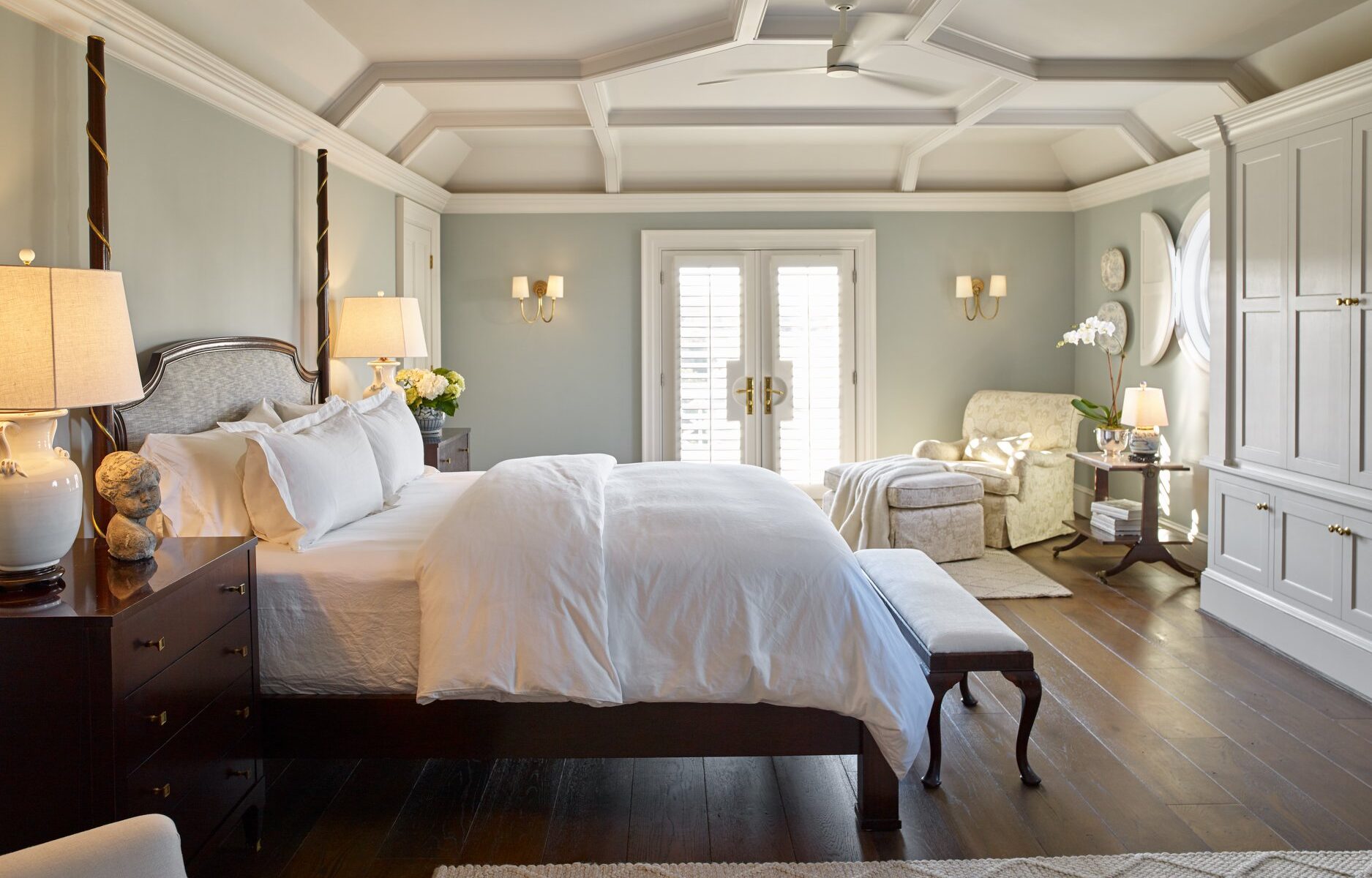
We all know that a well-lit room can change the entire look and feel of a home, but you might be surprised to learn that there’s actually a science to good lighting. Architects and designers use certain rules and tricks to help a room have just the right ambiance. When lighting a home, professionals use at least three layers of lighting to achieve the desired effect. Learning how to properly layer and use lights is essential for quality interior design.
Since plantation shutters allow you to filter sunlight in and out of the house, your shutters are another lighting layer that can make a huge difference in the comfort and style of your home.
Ambient Lighting
Ambient lighting is considered to be the first layer of lighting. This type of lighting provides the overall light in a room. It serves as the foundation of your lighting design. Strong examples of ambient lighting include chandeliers, wall sconces that spread light around the room, hanging pendant lights that bathe the room in light, and even ceiling fans with lights attached.
Task Lighting
Task lighting, meanwhile, is light that focuses on a specific area. You need and use task lighting when you’re engaging in an activity that requires a more focused light. For example, reading, getting ready for the day, working from home, or cooking in the kitchen.
For task lighting, you might have a vanity with lights, a desk lamp, pendants that focus light on a particular spot, cabinet lighting, or track lighting.
Accent Lighting
Accent lighting is the third layer of home lighting design. Accent lighting allows you to highlight key parts of your home that you’d like others to see. This type of lighting is also great for hiding the parts of your house that you’d like others to avoid.
Gallery lighting, or picture lighting, is a popular example of accent lighting. Dimmer switches on ambient lighting pieces, such as chandeliers, also provide a way to add a layer of accent lighting to a room.
Choosing Your Light Bulbs
When lighting a room, the type and quality of light bulb that you choose plays a major role in the result of your lighting layer. When buying bulbs, it’s helpful to consider the color rendering index (CRI) listed on the package. Ideally, use light bulbs that have a CRI above 80. The closer you get to 100, the more accurate the colors of your room will appear. A CRI below 80 will leave your room looking faded and lackluster.
You’ll also want to keep in mind the color temperature of your lights. This is measured in a degree known as Kelvin. The highest Kelvin degrees are bright white lights, while the lowest are soft and yellow. These yellow lights have become the standard and feel cozy in living spaces and bedrooms. In a kitchen, however, you’d likely prefer a cooler, brighter white light. In a home office, meanwhile, a daylight would be ideal for a well-lit environment. For mood lighting, as well as in general, LED bulbs are also becoming more and more preferred.
When purchasing a light bulb, taking care to learn the color temperature, color rendering index, and even type of bulb will enhance the design of your home.
How Do Plantation Shutters Affect Lighting Design?
Plantation shutters offer a variety of functions for a home. They add privacy and make a room feel less exposed. They are fashionable and contribute to the design scheme of the home. They are energy-efficient. However, they also serve the important purpose of providing effective light control.
With plantation shutters, you use the tilt rod to move the louvers, or horizontal slats, of the shutter. This allows you to control the sunlight entering each room. Natural sunlight is considered the ideal light source for any room. Sunlight is mood boosting and sets the perfect ambiance. When you combine the right amount of natural sunlight with ambient, task, and accent lighting, your room will feel comfortable and complete.
Designing Your Home Lighting
While you might be tempted to decorate and arrange your room before deciding on your lighting plans, it is usually better to plan your lighting before setting up a room. For instance, what activities will take place in your room? What mood are you wanting for the room? What pieces of the room or objects in the room would you most like to highlight? Answering these questions can help you determine the best ambient, task, and accent lighting for the space.
Plantation Shutters from Shenandoah Shutters
Plantation shutters have been a treasured window treatment for centuries. Shenandoah Shutters has been handcrafting custom, hardwood plantation shutters for over 30 years. We’re located in Richmond, Virginia, and service Virginia, Maryland, and Washington, D.C. We can build plantation shutters for windows of any size or shape. We provide a variety of traditional and contemporary plantation shutter looks, including our own, patented Softedge design.
If you’re ready to enhance your home’s lighting design, contact Shenandoah Shutters online today. You can also give us a call at 1-800-733-1549.
